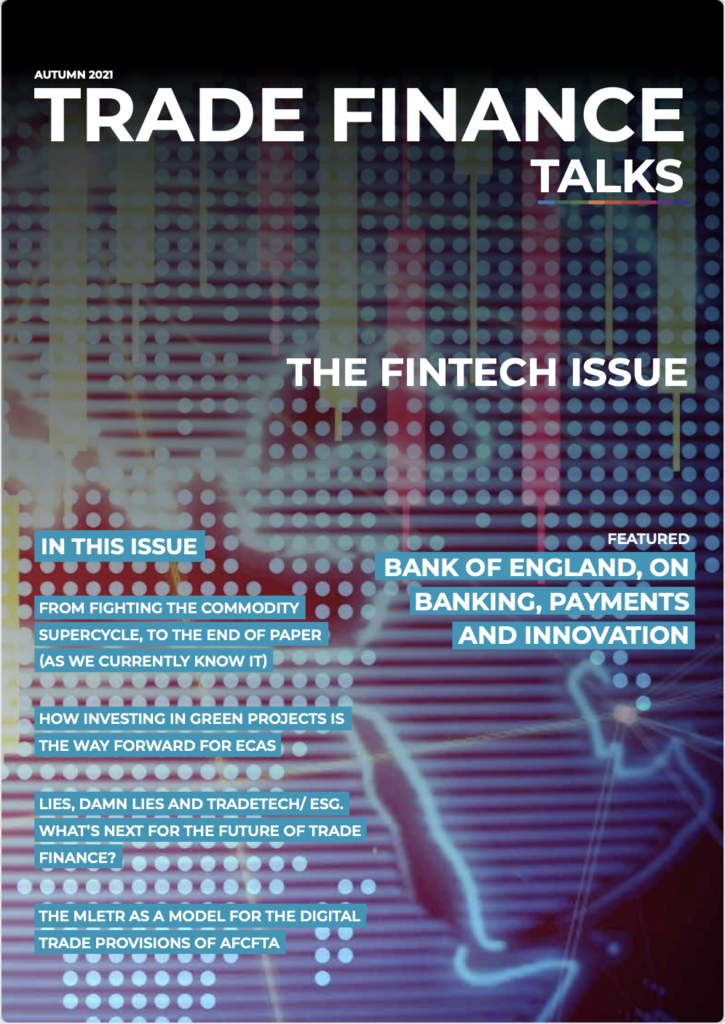Today, transformation is a buzzword doing the rounds in all companies and sectors around the globe and the maritime sector is very much in the middle of this wave as well. TFG heard from Punit Oza, Executive Director at the Singapore Chamber of Maritime Arbitration, who talked about the main pillars that support a transforming organisation in the commercial shipping and freight sector.
Three pillars supporting a transforming organisation
The first pillar is sustainability. As an organisation transforms itself, it needs sustainable processes and systems that are dynamic and rise above the individual users. The processes and systems will live on well beyond the users, and need to stand that test of longevity and adaptability.
The second pillar is transparency. As they say, “what you see is what you get”. It is important to establish clear and transparent processes and systems, which will help the entire organisation recognise its strengths, weaknesses, and gaps.
The final pillar is profitability. Eventually, the organisation needs to remain profitable to survive and grow. There are many ways you can gauge the efficiency and results of a transformative process and system, but eventually, it will be profitability – the ability to contribute to the bottom line – as the final straw on the camel’s back.

Key trends in commercial shipping
To truly transform, we must address the fundamental question – why transform? Things are going well right now, so why change? These are natural questions and ones that any management team should be asking. The answers lead us to identify the key trends in commercial shipping:
1. Family-owned shipping companies are undergoing a “sea change” (pun intended). When we look at family-owned companies such as MSC, Maersk, PCL, and even Klaveness, we see they are moving towards professional managers taking over the running of the company. In the past, the shipping companies were dominated by the family members controlling the company. They were, in effect, the “deal-makers”, and the chartering managers in these companies were essentially doing the back-end jobs – running voyage estimates and negotiating the contracts. This has meant that the knowledge of systems and processes has become the benchmark of expertise for chartering professionals.
As the companies have become more professionalised, and the technology is now quickly taking over these systems and processes, these chartering managers are expected to take over the task of deal-making. This will also mean that a whole new set of skills need to be imparted to these professional managers. This is one of the key reasons why digital transformation is essential – to unlock the true potential of the chartering professionals.
2. The old school way of teaching and passing knowledge from seniors to youngsters through mentoring does not exist. The intent to mentor is missing and, in some cases, so is the knowledge, especially among senior personnel who came into the industry in the heady years of 2003 to 2008, when the market was on fire. These senior managers never got trained, due to no fault of their own, in the basic concepts of shipping, and that means they are not able to pass on any “ knowledge” to the younger generation. In addition, the younger generation is much more impatient, and prefers to learn through technology rather than the old school methods.
3. Gone are the days when information was key to getting a deal done. Today, data is the new “oil”, but it is becoming more and more democratised. Nearly all of us have access to the same data. The power of data and the impact of its objectivity is unparalleled. However, the key is not data itself but the way we analyse it. It will be analytics that will set you apart and get the deal done. Gut feel and memory used to be behind decisions taken, but they are limited in scope, extremely subjective in nature, and linked to an individual. Data Analytics allows us to make objective and data-driven decisions, although the task of making that decision still lies with humans.

How to leverage the key trends
It is important to remember that technology is not the endpoint, but only an enabler that allows you to get to the endpoint – which is to solve real pain points.
The first action is that the process must start from the top. The vision of digital transformation must be laid out by the top management, communicated in clear terms to the whole organisation, and possibly written into one of the broad goals of the company. Digital transformation must be brought into the organisation in the same way that traffic from two lanes merges into one on an expressway.
The main elements of this merging of lanes are setting of traffic rules (Chief Executive Officer sets these rules), the cars themselves (Chief Digital Officer provides these technology vehicles and products), and, finally, the drivers who are driving these cars (Chief Human Resource Innovators ensure that the personnel using these products are adequately skilled). Thus CEO, CDO, and CHRO must combine their energies to build this vision and implement it.
The second action is to get the buy-in from existing staff. Not only are the existing staff a reservoir of knowledge and experience, but they are also, most likely, the biggest revenue-earners in the team. They need to be on board. Their obvious questions are – why do I need to transform? I know my business well and am making good money for the company, so why change? Am I making my own job redundant?
Over the years, knowledge and proficiency in systems and contracts was considered an end. This must change. It is important to use technology to standardise and automate processes, and at the same time re-skill employees with skills such as Insight Selling, Marketing, and Negotiation Skills, to turn process experts into deal-makers. This will unlock their true value and get their crucial buy-in in the transformation process.
The third action is to attract young talent and, more importantly, retain them. The younger generation is looking for colleagues that they enjoy working with, and a sense of purpose. Digital transformation ticks both these boxes. The digital transformation journey is as exciting as a treasure hunt. You have been given the destination and a set of clues, and it is up to you to solve the riddles and reach the treasure. When you make this an exciting process and involve the younger talent, they will simply love this process. Often, the younger talent is not given credit for their ideas, and in some cases, not even given a voice on the table. This must change.
The young talent are digital natives with very little baggage from the past, and that should be a positive attribute to bring about digital transformation. A key use of technology with the existing staff is to vault their knowledge by creating videos and presentations on various topics of expertise, and disseminating them across the organisation. Remember to give them full credit, which is obviously well deserved and will motivate them even more.
This technological tool will also help bridge the knowledge gap of seniors as they are more likely to learn those concepts on their own phone or laptop than to publicly admit they lack knowledge. These tools also ensure buy-in from the younger talent.
The final action is to equip the organisation with the power of data analytics. This will involve data literacy (ensuring that each employee is aware of the power of data and thereby entering it more responsibly), data access (so that each employee can see how powerful data is helping them and enabling them to contribute better), and, finally, data tools (to visualise the data, capture insights, and therefore drive decision-making). These three elements will combine to create data democracy, which will ensure that the organisation truly moves towards data analytics in an efficient and purposeful manner.

Klaveness – a specific but generic example
While the above lays out the conceptual clarity, it is best to give a few examples to link them up with the real world. At Klaveness, we have truly transformed the organisation from within and I was quite fortunate to start that process by heading the Processes, Systems and Competence (PSC) team for its first few years.
We adopted the PSI approach to transformation. The first stage is problem identification followed by solution development and finally, implementation and follow up. The problem identification stage involves identifying specific problems/challenges faced by charterers and operators, such as inefficiencies (time wasted), quality issues, any issues which limit decision making and has a high degree of complexity. It is important to prioritize these by the impact of the problem and the feasibility of being able to solve it.
The solution development stage involves developing solutions for problems in cooperation with end-users, IT, and other relevant stakeholders. Solutions can be standardization/change of process, implementing new/changing systems etc. The key is to start by putting together a prototype or “minimum viable product/solution” and adjust based on feedback from end-users. The most important part is the implementation and follow up. This involves ensuring implementation of new solutions in cooperation with IT and other stakeholders, follow-up on usage/adherence, measure the impact of the solution (i.e., has it solved the problem?) and thereafter further adjust solutions based on feedback from end-users.
To re-skill and up-skill the employees – young and new – Klaveness believes in training from within. The idea was to build flexible and customized training modules, creating ownership in the process & ensuring monitoring use of training modules, thereby focusing the energies of the leaders on those team members who were lagging. These modules ensured vaulting the knowledge in one technological arena and have the added advantage of ensuring the training material is current and dynamic. Finally, the technological modules ensure that proper motivation and incentives can be provided to the staff. The in-house online training resource is aptly named “Klaveness Academy”
We also realised that collaboration within the organisation must become more contextual. Emails are long and usually contain multiple issues and subject matters. As we go back to search these old emails, it is usually impossible to extract the context. Further emails are essentially a static platform, which means that any updates need to be resent and circulated by fresh emails, thereby overloading the staff with messages with too much content. We believed that we needed to replace emails (especially internal communication) with a platform ideally suited to capture knowledge, learnings, documents, standard formats in one place which could be centrally updated and automatically disseminated. We successfully replaced all internal communications with the MS Teams platform, which enhanced contextual collaboration to a great extent.
We also ensured that we created visualisation tools to share the data insights across the entire organization using MS Power BI. These dashboards solved one key issue – they created a single version of the truth and one source of data for all. This produced much more efficient and streamlined discussions and captured comments and insights from multiple sources in one place, thereby positively influencing decision making. Over and above this, it also helped democratize the data and motivate analytical reasoning within the organization.
The steps to a successful transformation
Combining the generic trends and actions outlined above with my experience in Klaveness, I can outline some key takeaways:
- Transformation is not an option but a necessity!
- Data is NOT the key – Data Analytics is!
- Eliminate insecurity among senior talent through re-skilling and motivate younger talent by providing them with a voice and a purpose.
- Technology is your friend – use it in difficult times to solve problems.
- Transform from within and then move outside to focus on customers.
- Use the Problem/Solution/Implementation Approach.
- Seeing is believing – aim for a few small wins to reaffirm belief.
- Vision set out by CEO and executed by CDO and CHRO.
- Step-by-step approach is good enough, but these steps must move the company in the right direction.
I truly believe that technology is a great leveller. Eventually, we will move towards standardisation, and more shipping products will become “homogenous” in nature. The only differentiating factor will be the people and the service they are giving to their customers.
All things being equal, the team that offers a better service and value to their customers will win, and the focus will move back to adding value to the customer. However, for all other things to be equal, companies need to catch up on digital transformation and technology. Thus, it is essential to embrace this for all companies.
Remaining static in an ever-changing world is nothing short of suicide.
Good luck, and avoid fatal accidents along the way.











































